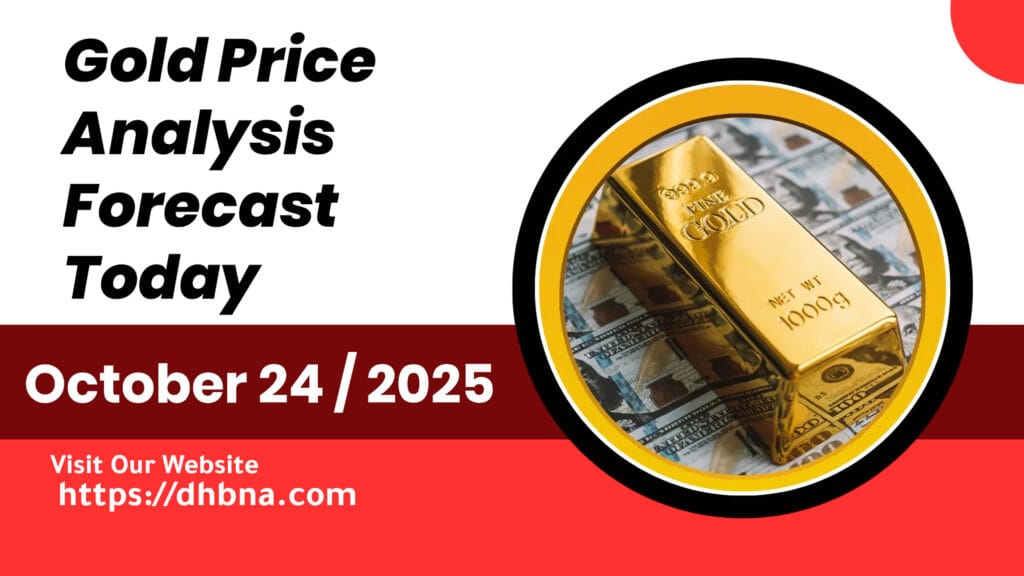The more uncertain the markets, the higher gold rises.
As of October 24 2025, gold prices stood around US $4,057.53 per ounce, underpinned by a complex mix of economic and geopolitical forces. Rising tensions between the U.S. and China, alongside the ongoing U.S. government shutdown, have boosted safe-haven demand. At the same time, growing expectations for an imminent Federal Reserve rate cut have lowered the opportunity cost of holding non-yielding assets like gold.
This analysis follows the DHBNA methodology, emphasizing documented, data-driven reasoning, with references to institutions such as the Federal Reserve, HSBC, ANZ, J.P. Morgan, Reuters, and Bloomberg.
Global News and Indicators
Recent developments have strengthened the safe-haven narrative for gold:
- The U.S. government shutdown continues to disrupt key economic releases, heightening uncertainty.
- U.S.–China tensions and renewed instability across the Middle East have amplified geopolitical risk premiums.
- A growing sense of FOMO (fear of missing out) among investors has driven additional inflows into gold ETFs, extending the rally.
According to Reuters and Bloomberg, these combined factors have propelled gold beyond the USD 4,000 threshold, reflecting institutional buying and weakening confidence in the U.S. dollar.
Markets and Commodities
Gold’s relationship with major markets remains critical.
- A softer U.S. dollar index (DXY) has made gold cheaper for foreign investors.
- U.S. 10-year Treasury yields hovered near 4.00% on October 24 (Trading Economics data), keeping real rates relatively low and supportive of gold prices.
- Falling oil prices, as highlighted by Business Insider, are tempering inflation expectations and reinforcing dovish policy bets in global markets.
Analysis from Deriv suggests the traditional inverse correlation between gold and Treasury yields has weakened in 2025, signaling structural changes in safe-haven flows.
In summary, a weaker dollar, stable yields, and softer commodity inflation have combined to sustain gold’s strength despite minor profit-taking above USD 4,380/oz.
Central Banks and Monetary Policy
Monetary policy remains a dominant force. Market forecasts from HSBC and ANZ suggest the Federal Reserve may cut rates by 25 bps at its late-October meeting, further supporting gold markets.
Meanwhile, the World Gold Council reports that 95% of central banks plan to increase gold holdings within the next 12 months.
Research by Metals Focus estimates total 2025 purchases at around 900 tons, roughly double previous years. This dual backdrop, accommodative U.S. policy and sustained global reserve diversification, continues to reinforce the long-term bid for gold.
Technical Overview
Recent technical readings highlight a key support zone near USD 4,200/oz and resistance between USD 4,300–4,400/oz. A breach below USD 4,000–4,020 could trigger a short-term correction toward USD 3,950. Short-term momentum remains positive, while medium-term dynamics point to a stable, upward-biased range in the gold market.
Forward Outlook
Based on current data, gold prices are likely to remain elevated around the USD 4,000 mark, supported by a soft dollar, potential Fed easing, and strong official-sector demand. However, any hawkish surprise from the Fed or stronger-than-expected global economic data could limit upside momentum.
Neutral Summary
Gold’s current performance reflects a delicate balance between safe-haven demand and central-bank policies. It is neither in a clear correction nor in an unchecked rally. Rather, it trades within an equilibrium shaped by interest-rate expectations, reserve diversification, and global uncertainty, offering investors a balanced perspective without implying any direct investment advice.
Discover more from Dhbna
Subscribe to get the latest posts sent to your email.

